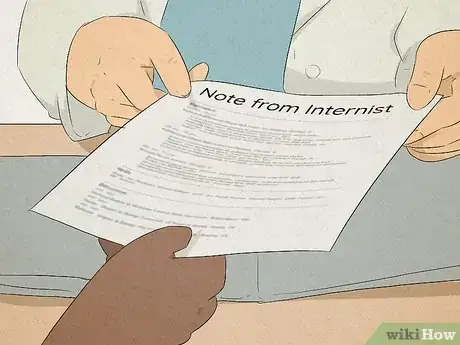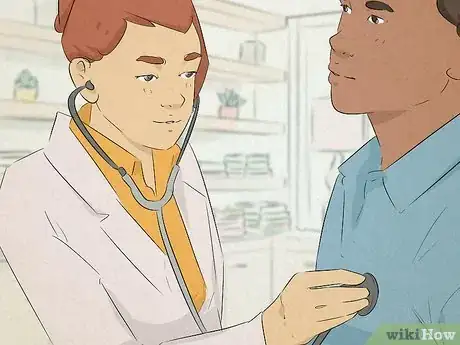This article was co-authored by Lisa Sanders, MD, FACP. Dr. Lisa Sanders, MD, FACP is an American physician, medical author, journalist, and an Associate Professor of Internal Medicine at the Yale University School of Medicine. Dr. Sanders also writes the popular Diagnosis column for the New York Times Magazine and the Think Like a Doctor column featured in the New York Times blog, The Well. In 2010, Dr. Sanders published "Every Patient Tells a Story: Medical Mysteries and the Art of Diagnosis." Dr. Sanders received her BA from the College of William and Mary and completed an MD and residency at Yale University. She is board certified in internal medicine by the Associate Board of Internal Medicine.
This article has been viewed 21,862 times.
Dr. Lisa Sanders is a physician and Associate Professor of Medicine at Yale School of Medicine. An accomplished doctor, Dr. Sanders also writes the popular Diagnosis column for the New York Times Magazine, where she discusses intriguing medical cases. In fact, her column is actually the inspiration for the television show House MD. Unfortunately, Dr. Sanders’ team gets a lot of calls and requests each day, so you may not be able to schedule an appointment with her very quickly. Don’t worry—if you’re trying to get some chronic symptoms diagnosed, there are a lot of different options you can consider.
Steps
How do I see a specialist if I can’t see my primary doctor?
-
1Reach out to an internist in your area first. Internists specialize in internal medicine, and may be able to figure out what the problem is. If the internist can’t pinpoint the problem, they can recommend a certain specialist.
- An internist will have special insights into some good specialists you can visit.
-
2Bring a note from your internist when you visit the specialist. At your appointment, your internist will write down your medical history, along with all of the exams and studies they completed during your appointment. They’ll also include their personal thought processes, which may help give your new specialist some background and context.
What do I do after I see an internist?
-
1Visit physicians associated with an academic medical center. If you live near a university or medical school, look for the medical center attributed to that school. Doctors at academic medical centers often have the most up-to-date knowledge of different diagnoses.
-
2Schedule appointments with specialists who are skilled in certain treatments. If your diagnosis requires specialized treatment or surgery, it’s definitely worth traveling to a doctor or surgeon who has a little more experience. However, don’t go from doctor to doctor to get a second opinion—this isn’t an efficient or effective way to figure out what’s going on.






-Step-8-Version-2.webp)




















-Step-8-Version-2.webp)






































Medical Disclaimer
The content of this article is not intended to be a substitute for professional medical advice, examination, diagnosis, or treatment. You should always contact your doctor or other qualified healthcare professional before starting, changing, or stopping any kind of health treatment.
Read More...